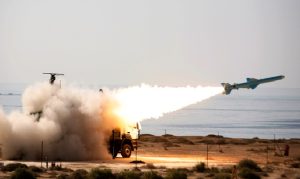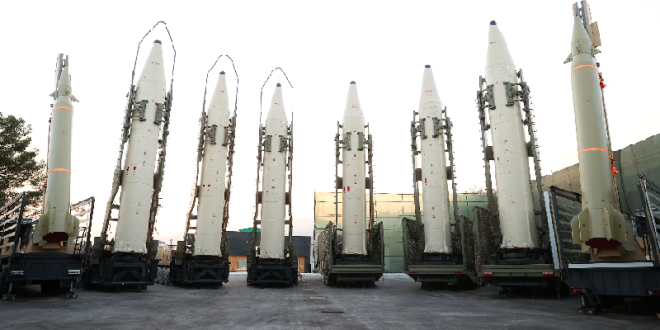23-09-2024
WASHINGTON: Iran did not include mobile launchers with the close-range ballistic missiles that Washington last week accused Tehran of delivering to Russia for use against Ukraine, according to three sources with knowledge of the matter.
 The sources, a European diplomat, a European intelligence official and a US official said it was not clear why Iran did not supply launchers with the Fath-360 missiles, raising questions about when and if the weapons will be operational.
The sources, a European diplomat, a European intelligence official and a US official said it was not clear why Iran did not supply launchers with the Fath-360 missiles, raising questions about when and if the weapons will be operational.
The US official, who like the other sources spoke on condition of anonymity, said Iran had not delivered the launchers at the time of the US announcement about Iran’s delivery of the weapons. The European intelligence official said without elaborating that they did not expect Iran to provide launchers.
Reuters first reported Iran’s plan to send the missiles to Russia.
Two experts told media there could be several reasons why the launchers were not sent. One is that Russia may plan to modify trucks to carry the missiles, as Iran has done. Another is that by withholding the launchers, Iran is allowing space for new talks with Western powers on easing tensions.
The Russian defense ministry declined to comment.
The US National Security Council did not immediately respond to a request for comment and the Pentagon declined to comment.
Iran’s mission to the United Nations did not immediately respond to a request for comment.
Tehran denies providing Moscow with the missiles or with thousands of drones that Kyiv and Western officials have said Russia uses against military targets and to destroy civilian infrastructure, including Ukraine’s electrical grid.
US Secretary of State Antony Blinken said on Sept. 10 that Iran had delivered the Fath-360s to Russia and would “likely use them within weeks in Ukraine.”
 The missile would pose an additional challenge for Ukraine, which is constantly adapting its air defenses to innovations by Russian forces. Iran’s semi-official Fars news agency says the missile travels at four times the speed of sound when approaching targets.
The missile would pose an additional challenge for Ukraine, which is constantly adapting its air defenses to innovations by Russian forces. Iran’s semi-official Fars news agency says the missile travels at four times the speed of sound when approaching targets.
Blinken said the missiles threatened European security and would be fired against short-range targets, allowing Russia to reserve more of its extensive arsenal for targets beyond the front lines. The Fath-360 has a range of up to 75 miles (121 km).
The United States, Germany, Britain and France imposed new sanctions on Iran, and the EU said the bloc was considering fresh measures targeting Iran’s aviation sector.
The Kremlin at that time declined to confirm its receipt of the missiles but acknowledged that its cooperation with Iran included “the most sensitive areas.”
Blinken did not say how many Fath-360s Iran supplied to Russia or when they were sent.
Reuters determined through shipping data that a Russian freighter sanctioned by Washington, the Port Olya-3, made voyages between Iran’s Caspian Sea port of Amirabad and the Russian port of Olya several times between May and Sept. 12.
Fabian Hinz, an expert on Iranian missiles with the International Institute for Strategic Studies, said he could not confirm that Tehran withheld the launchers.
Ballistic missiles require specifically designed launchers in order to be fired.
According to Hinz, one reason Iran didn’t send launchers may be that the civilian trucks that Iran modified to launch these and other missiles are not robust enough to operate in rough terrain during Ukraine’s harsh winter. Iran modifies trucks made by Mercedes and other companies and turns them into easily disguised missile launchers, he said. (Int’l News Desk)
 Pressmediaofindia
Pressmediaofindia




